Art Fairs
‘The Vultures Are Circling’: The Market for Young Artists Is White-Hot Again—But Can They Get Out Alive?
Buyers jostled for the chance to acquire work by up-and-coming stars at Art Basel Miami Beach. Here's the problem.
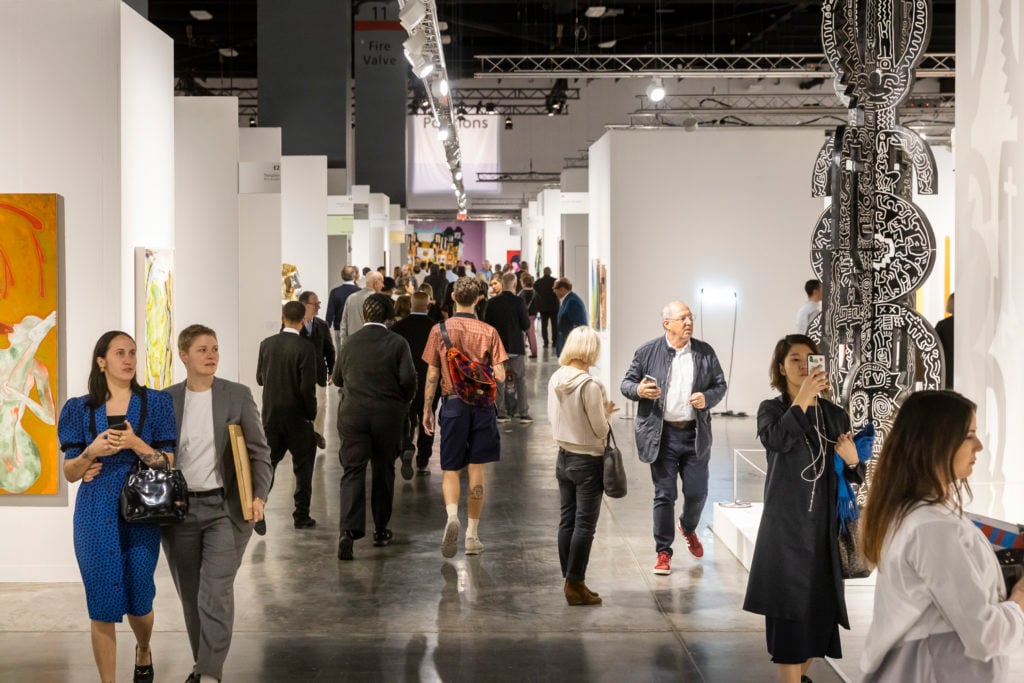
Buyers jostled for the chance to acquire work by up-and-coming stars at Art Basel Miami Beach. Here's the problem.

Julia Halperin

If you were under the impression that all you needed to buy a work of sought-after contemporary art was money, a trip to Art Basel Miami Beach this week would quickly prove you wrong.
Collectors at the glitzy Miami fair, which runs through the weekend, jostled for the privilege of spending five to six figures on works by rising stars such as Amoako Boafo and Loie Hollowell. In order to get an edge, some promised to donate their work to a museum within just a few years; others agreed to buy something by another artist from the gallery’s stable to sweeten the deal. And, of course, they pledged not to resell the work at auction—at least for a number of years.
These sorts of arrangements are symbolic of today’s market moment, in which some of the energy appears to be shifting away from vintage work by rediscovered figures from the 20th century and masterpieces by blue-chip names (which are currently in short supply). In their place, the intensity has been redirected to young guns—many of whom have yet to turn 30 or have their first museum exhibition.
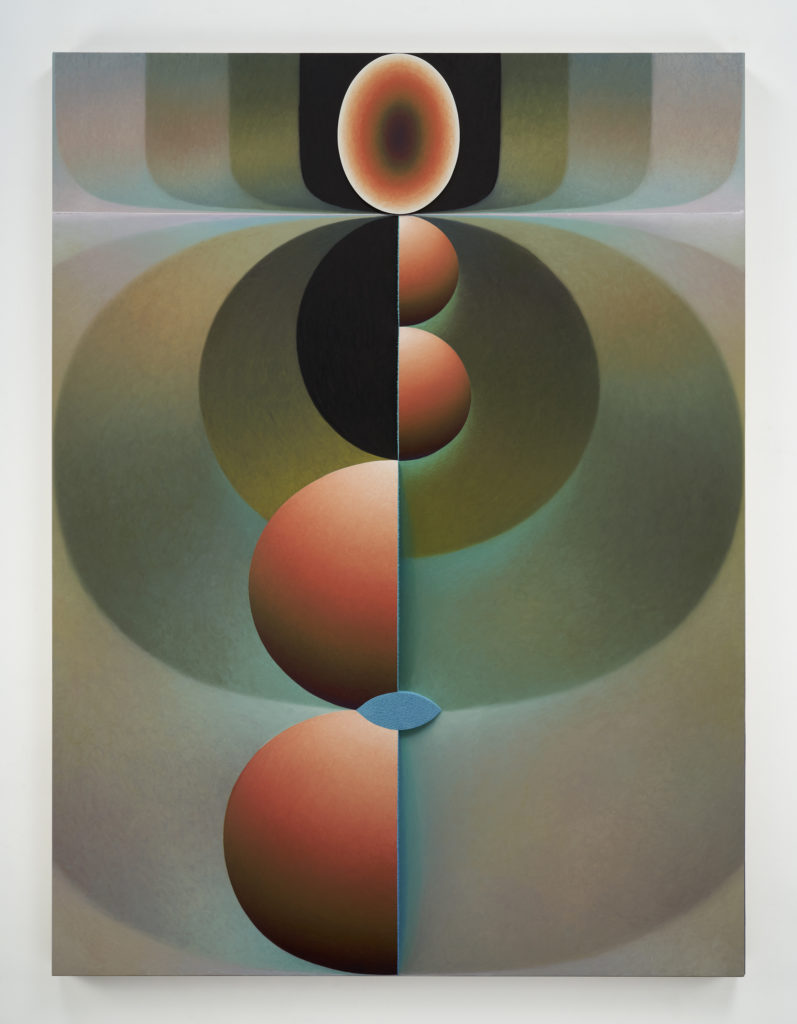
Loie Hollowell, Standing in Water (2019). © Loie Hollowell, courtesy Pace Gallery.
The art world has always been afflicted with a next-big-thing obsession. But due to a combination of factors—including the speed with which information travels online, collectors’ desire to win big but spend comparatively little, and, of course, the genuine thrill of discovery—the market’s yen for youth, which had waned over the past few years, is back.
Art advisor Liz Parks recalls how, in the days leading up to the fair, she and a client looked through previews that “included very strong work by established and mid-career artists that she already has in her collection,” yet the client told her, “‘This is great… but I want to see something new.’”
Plenty of new art was on hand at the Miami fairs, and selling swiftly from emerging and established galleries alike. Hauser and Wirth—which just last year poached two Impressionist and Modern specialists from Christie’s, suggesting a shift in focus toward the secondary market—prominently displayed a landscape pastel by Nicolas Party, who at 39 is one of the newest and youngest additions to its roster. The work sold for $385,000 to an American institution.
Almine Rech Gallery, whose recent fair presentations included an installation by 74-year-old Conceptual pioneer Joseph Kosuth, sold two works by 27-year-old recent Yale MFA graduate Vaughn Spann for prices ranging from $35,000 to $50,000; a painting by 29-year-old Canadian artist Chloe Wise for between $35,000 and $50,000; and a painting by Marcus Jahmal, also 29, for between $20,000 and $50,000.
Meanwhile, Mariane Ibrahim Gallery sold out of bold portraits by the 35-year-old Ghanaian painter Amoako Boafo at prices ranging from $15,000 to $45,000—and left many eager buyers lining up on the waiting list. Two of the works sold are promised gifts to institutions. (Such conditions are meant to benefit collectors who truly love a work of art—or at least love the cachet of owning it for a little while.)
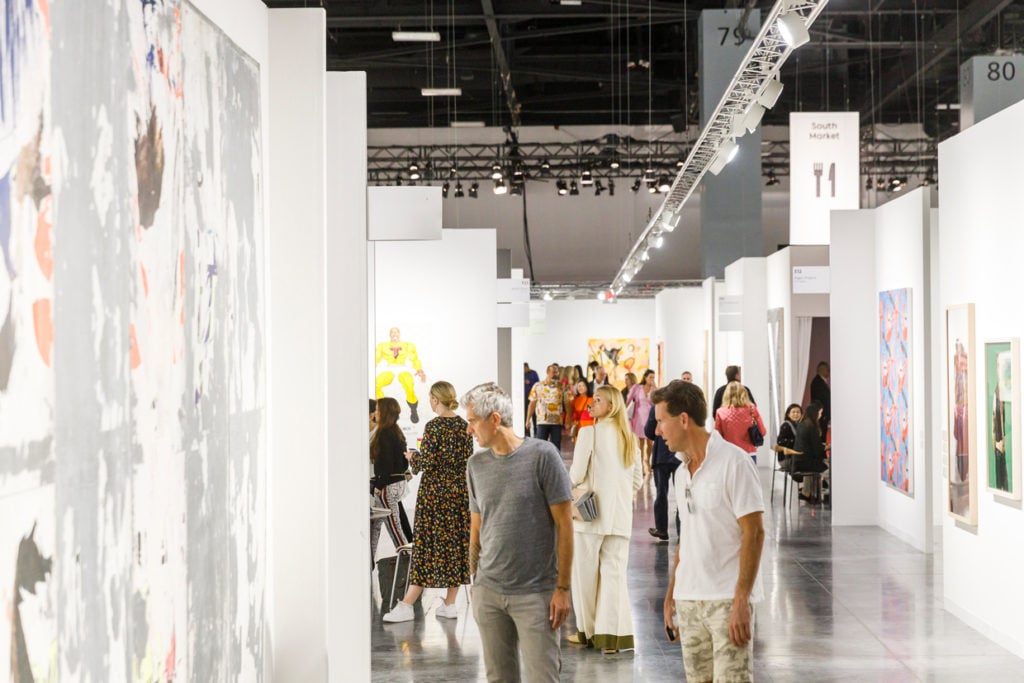
Art Basel Miami Beach 2019. Photo: Courtesy of Art Basel.
“Collectors used to have the luxury of following an artist’s career through their first few shows before deciding if they wished to acquire a piece,” says art advisor Kristy Bryce. “Now there’s a feeling that one needs to buy the moment you encounter an artist for fear that otherwise you’ll be stuck at the back of an interminably long wait list—behind every museum or collector with deep enough pockets to gift it to a museum.”
This sense of urgency, she notes, is compounded by the perception that “by the time you get your chance to acquire something, the prices will have risen beyond your reach.”
The overwhelming demand for a relatively small handful of anointed young talents—which was also on full display during the November day sales in New York last month—can be harmful for those still finding their footing in the art world. “Generally speaking, artists just want to work and the attention can interfere with this process,” Ibrahim says.
Unlike an artist whose career takes off after two or three decades of working in the studio, recent graduates have not had the opportunity to experiment and evolve outside of the spotlight—and may fall victim to the pressure to produce more of the same to satisfy demand.
The glare can also be difficult for dealers, who must suss out opportunistic buyers and keep the artist happy while, at the same time, encouraging them to eschew immediate gratification (not to mention avoid burnout) in favor of building a sustainable career.
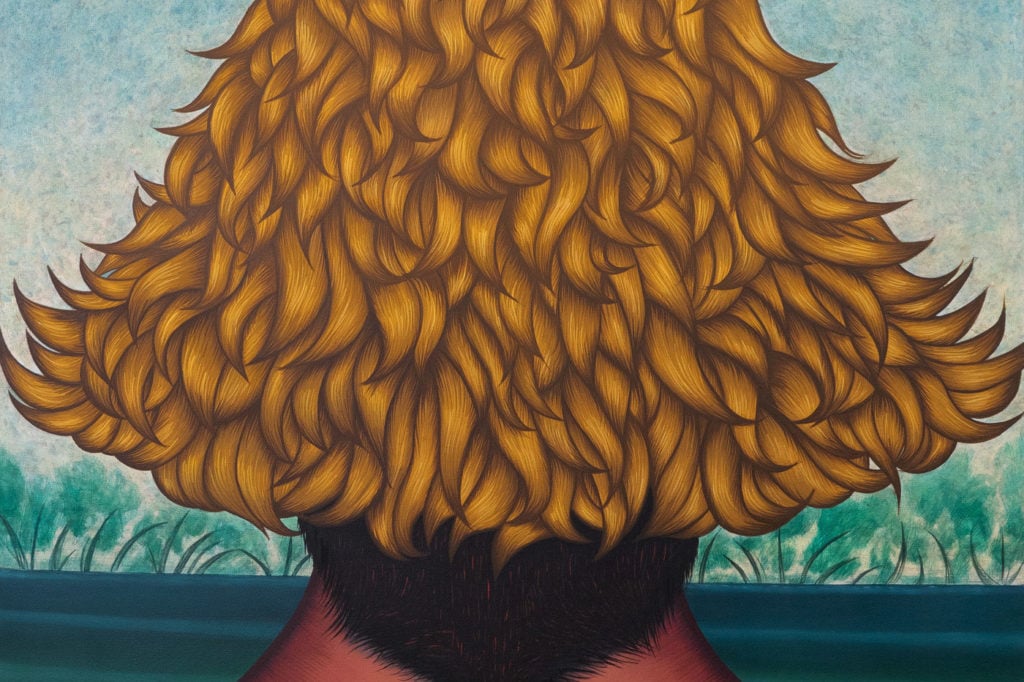
Julie Curtiss, Outlook (2019) [detail]. Photo: Anton Kern Gallery.
At Art Basel Miami Beach, Kern sold a Curtiss painting of the back of a head to a collector who promised to donate it to a museum within five years. “It’s difficult when there is such a big disparity between the primary and the secondary market—you buy something and you know it is worth more instantly,” Kern says. “The responsibility of a dealer, among lots of other things, is placing the work right—not to flippers but to real collectors.”
This dynamic is not new. Just five years ago, the market experienced what has become known as the “Zombie Formalism apocalypse,” when a group of artists who made Instagram-friendly abstraction became a sensation, saw their prices rise by more than 1,000 percent at auction, and promptly fizzled out. “I had a really successful Zombie Formalist painter who sold 50 works, then some popped up at auction and it ruined his career,” recalls dealer Michael Benevento.
And while the trade isn’t in a moment as overheated as it was during the Zombie craze, the hype cycle has become even more condensed since then. When Ibrahim applied to Art Basel Miami Beach with a solo booth of Boafo’s work this past spring, for example, most collectors did not know his name. Six months later, those same people do not have a shot at acquiring his work.
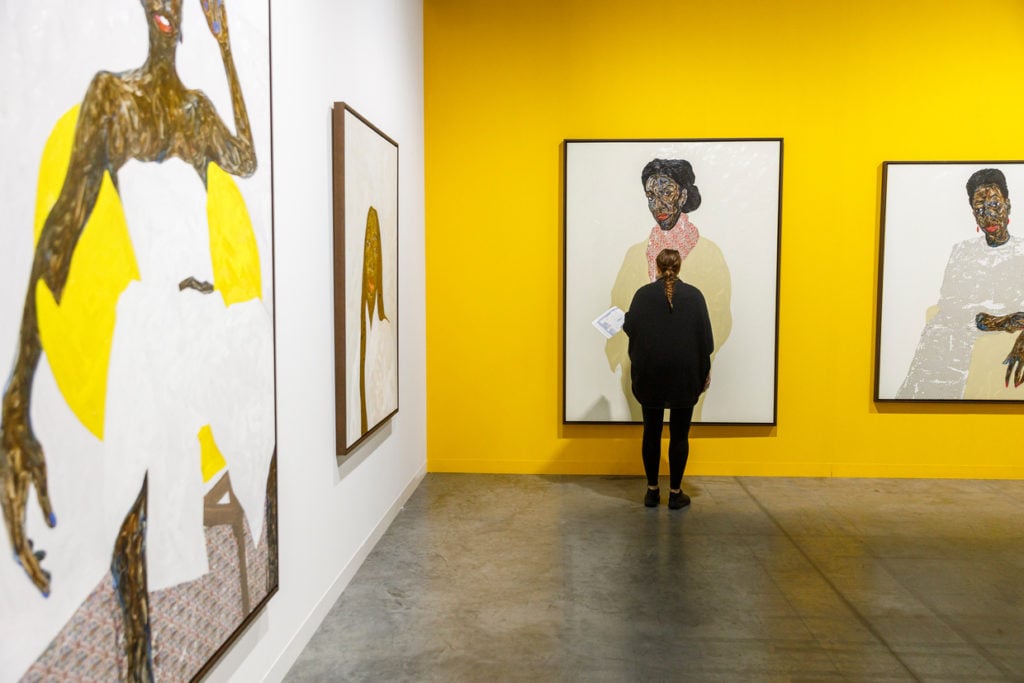
Mariane Ibrahim Gallery’s presentation of Amoako Boafo at Art Basel Miami Beach 2019. Photo: courtesy of Art Basel Miami Beach.
Boafo is not alone, either. Just three years after her first show, 31-year-old Asuka Anastacia Ogawa is drawing hefty demand at Blum & Poe, which sold her painting of two surreal figures for $25,000 during the fair’s VIP preview. “I have emails pouring in for her—it’s a $25,000 painting and the vultures are circling,” says the gallery’s Tim Blum. “With younger artists, you have to be more careful.”
But despite a gallery’s best efforts to avoid speculation, the market, like the weather, has a way of exerting its will. “At a certain point, many collectors stop looking at the object on their wall as an artwork,” notes art advisor Todd Levin. “When the numbers get high enough, they start seeing it as a bag of money, and the larger that bag of money gets, the bigger the temptation to sell.”
As one dealer of young artists acknowledged, “You really can’t control it—at the end of the day, the work protects itself if it’s good. You have to believe in the artist.”